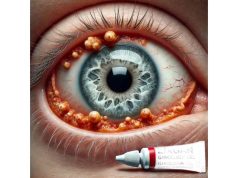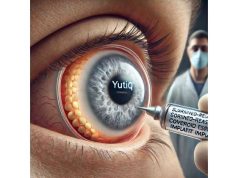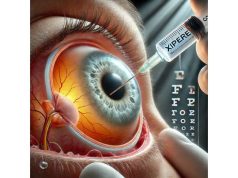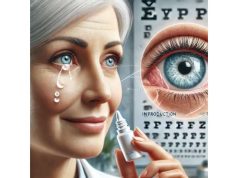
Diabetic retinopathy is a leading cause of vision loss among adults worldwide, stemming from the damaging effects of diabetes on the tiny blood vessels of the retina. Early stages may go unnoticed, but progression can lead to severe vision impairment or blindness if untreated. Understanding the condition, identifying risk factors, and applying current best practices in diagnosis and management are crucial for preserving eyesight. In this guide, we’ll take a comprehensive, reader-friendly look at everything you need to know about diabetic retinopathy, including conventional treatments, advanced surgical options, breakthrough therapies, and future directions in care.
Table of Contents
- Retinopathy Basics and Epidemiology
- Pharmacological and Conservative Treatments
- Surgical and Interventional Techniques for Vision Preservation
- Latest Innovations and Cutting-Edge Technology
- Clinical Research Trials and Future Directions
- Frequently Asked Questions
Retinopathy Basics and Epidemiology
Definition and Pathophysiology:
Diabetic retinopathy is a diabetes-related complication affecting the retina—the light-sensitive tissue at the back of the eye. It arises due to prolonged high blood sugar damaging retinal blood vessels, resulting in leakage, blockage, or abnormal growth of new vessels (neovascularization). The condition progresses in stages: nonproliferative diabetic retinopathy (NPDR), which is the early stage, and proliferative diabetic retinopathy (PDR), the more advanced and sight-threatening stage.
Types of Diabetic Retinopathy:
- Nonproliferative Diabetic Retinopathy (NPDR): Characterized by microaneurysms, dot-blot hemorrhages, hard exudates, and varying degrees of blood vessel leakage or closure.
- Proliferative Diabetic Retinopathy (PDR): Defined by the formation of fragile, abnormal new vessels that can bleed or cause retinal detachment.
- Diabetic Macular Edema (DME): Swelling or thickening of the macula (the part of the retina responsible for central vision) due to fluid leakage.
Prevalence:
- Diabetic retinopathy affects nearly one in three people with diabetes.
- It remains the principal cause of vision impairment in working-age adults globally.
- The risk increases with duration of diabetes, suboptimal blood sugar control, and coexisting hypertension or kidney disease.
Risk Factors:
- Poorly managed blood sugar
- High blood pressure (hypertension)
- High cholesterol
- Longer duration of diabetes
- Pregnancy in diabetic women
- Smoking and sedentary lifestyle
Symptoms and Early Detection:
- Early stages often have no symptoms.
- Blurred vision, floaters, dark spots, or sudden vision loss can signal advanced disease.
- Annual comprehensive eye exams with dilation are crucial for early detection, even if you feel fine.
Diagnosis:
- Dilated fundus examination: Eye doctor visualizes retina directly.
- Optical coherence tomography (OCT): Non-invasive imaging to assess macular thickness.
- Fluorescein angiography: Dye-based test to map blood vessel leakage or blockage.
Practical Advice:
If you have diabetes, make regular eye exams a part of your healthcare routine. Keeping track of your A1c, blood pressure, and cholesterol numbers can help protect your vision for years to come.
Pharmacological and Conservative Treatments
Comprehensive Medical Management:
The foundation of diabetic retinopathy treatment starts with addressing underlying diabetes and related health factors:
- Strict blood sugar control: Reduces the risk of developing or worsening retinopathy.
- Optimal blood pressure management: High blood pressure can speed up retinopathy progression.
- Control of cholesterol and lipids: High cholesterol is associated with hard exudate formation and DME.
Medications for Diabetic Retinopathy:
- Anti-VEGF Agents (Intravitreal Injections):
- Medications: Aflibercept, ranibizumab, bevacizumab, and faricimab.
- How they work: Block vascular endothelial growth factor (VEGF), a signal protein that triggers abnormal blood vessel growth and leakage.
- Uses: First-line therapy for diabetic macular edema (DME) and proliferative diabetic retinopathy (PDR).
- Frequency: Injections typically every 4–8 weeks, then extended based on response.
- Corticosteroids (Steroid Implants or Injections):
- Types: Dexamethasone (Ozurdex®), fluocinolone acetonide (Iluvien®).
- Indications: DME not responsive to anti-VEGF therapy or in selected patients.
- Considerations: Risk of increased eye pressure or cataract formation.
- Systemic Medications:
- While no oral drugs specifically treat retinopathy, medications for diabetes, blood pressure, and cholesterol play an essential supporting role.
Non-Pharmacological Conservative Measures:
- Smoking cessation: Improves overall eye and vascular health.
- Regular physical activity: Aids in glycemic and blood pressure control.
- Healthy diet: Rich in fruits, vegetables, lean protein, and whole grains.
Patient Education:
Understanding medication schedules, injection procedures, and the importance of follow-up can ease anxiety and boost treatment adherence. Simple lifestyle tweaks—like using brighter lighting, reducing screen glare, and keeping a vision diary—can help manage daily symptoms.
Long-tail Keywords Used:
- diabetic retinopathy medical management
- anti-VEGF injection for diabetic eye disease
- steroid implant for diabetic macular edema
- non-surgical diabetic retinopathy treatment
Surgical and Interventional Techniques for Vision Preservation
Indications for Surgical Intervention:
Not all patients with diabetic retinopathy require surgery. Surgical options are reserved for vision-threatening complications, including:
- Persistent or severe vitreous hemorrhage
- Tractional retinal detachment
- Macular edema unresponsive to medical therapy
- Progressive proliferative disease despite optimal medical care
Major Surgical and Interventional Techniques:
- Laser Photocoagulation:
- Focal/Grid Laser: Used for focal DME. Seals leaking microaneurysms.
- Panretinal Photocoagulation (PRP): Gold-standard for PDR. Destroys peripheral ischemic retina to halt new vessel growth and reduce risk of severe vision loss.
- Vitrectomy Surgery:
- Procedure: Removes blood-filled vitreous gel and scar tissue from inside the eye.
- Indications: Non-clearing vitreous hemorrhage, tractional retinal detachment, severe macular edema with premacular traction.
- Advances: Microincision techniques and improved instrumentation have made vitrectomy safer, with faster recovery.
- Combined Approaches:
- Some patients benefit from both surgery and pharmacologic therapy (e.g., anti-VEGF injections before or after vitrectomy).
Postoperative Care:
- Strict glycemic and blood pressure management continues to be vital.
- Eye drops, activity modifications, and close follow-up appointments are essential for optimal healing.
Patient Advice:
Ask your surgeon about expected recovery times, possible complications, and ways you can support your own healing—such as avoiding heavy lifting and following post-op instructions closely.
Long-tail Keywords Used:
- laser photocoagulation for diabetic eye disease
- vitrectomy for diabetic retinopathy
- surgical treatment for diabetic macular edema
Latest Innovations and Cutting-Edge Technology
Breakthroughs in Diagnostics and Therapies:
- Artificial Intelligence (AI) in Screening:
- AI-powered algorithms now analyze retinal images for early detection of diabetic retinopathy.
- Enables remote, rapid screening and triage, especially in underserved areas.
- Sustained-Release Drug Delivery:
- Newer intravitreal implants deliver anti-VEGF or steroids over months, reducing the burden of frequent injections.
- Emerging biodegradable platforms and refillable reservoirs are in development.
- Gene and Cell Therapy:
- Clinical trials are investigating therapies to restore retinal function or prevent vessel damage.
- Early-stage studies focus on delivering genes to block VEGF or promote vessel stability.
- Teleophthalmology and Home Monitoring:
- Patients can now track vision changes remotely, send photos of their eyes, and receive timely care without frequent clinic visits.
- Personalized Medicine:
- Biomarker research aims to predict which patients will benefit most from specific therapies, optimizing outcomes and minimizing side effects.
Advances in Imaging:
- OCT Angiography: Non-invasive, high-resolution scans visualize blood vessel networks and microaneurysms, aiding earlier detection and more precise treatment planning.
Patient Engagement Tools:
Download reputable diabetes and eye health apps to set medication reminders, track glucose, and log vision changes—empowering you to stay actively involved in your care.
Long-tail Keywords Used:
- new technology for diabetic retinopathy
- AI diabetic eye screening
- gene therapy for diabetic eye disease
- sustained-release implants for eye treatment
Clinical Research Trials and Future Directions
Ongoing and Recent Clinical Trials:
- Studies testing novel anti-VEGF agents and next-generation steroid implants for improved efficacy and convenience.
- Investigations of neuroprotective drugs aimed at preserving retinal nerve function.
- Research into regenerative medicine—using stem cells or gene editing to repair retinal damage.
- Large-scale trials of AI-driven screening in community and primary care settings.
What’s Next for Diabetic Retinopathy Care:
- Integrating AI with Clinical Practice:
- Broader adoption of AI screening could ensure earlier detection and prompt treatment on a global scale.
- Customized Treatment Pathways:
- Future care will likely be personalized—matching therapies to individual patient genetics, risk profiles, and response markers.
- Minimally Invasive Therapies:
- Expect further miniaturization and simplification of devices and drug delivery systems, making in-office treatments more comfortable.
- Telemedicine and Remote Monitoring:
- Home-based retinal imaging and virtual consults could become standard, breaking down access barriers.
Patient Advice:
If you’re interested in participating in a research trial, consult your ophthalmologist or visit major medical centers’ websites. Staying informed gives you access to the latest advances and may help others in the diabetes community.
Long-tail Keywords Used:
- clinical trials for diabetic retinopathy
- future of diabetic eye disease treatment
- personalized medicine for eye health
Frequently Asked Questions
What is diabetic retinopathy and how does it develop?
Diabetic retinopathy is a complication of diabetes where high blood sugar damages the retina’s blood vessels, causing leakage, swelling, or abnormal growth. Over time, this can lead to vision loss if not treated.
Can diabetic retinopathy be cured?
There is no cure, but early detection and effective management—including good diabetes control, medications, laser therapy, or surgery—can prevent severe vision loss in most people.
What are the first signs of diabetic retinopathy?
Early stages often have no symptoms. As the disease advances, you might notice blurred vision, floaters, dark spots, or sudden vision changes.
How often should people with diabetes get eye exams?
Experts recommend a comprehensive dilated eye exam at least once a year for all people with diabetes—even if vision feels normal.
What are the latest treatments for diabetic retinopathy?
Recent advancements include anti-VEGF injections, sustained-release implants, improved lasers, and AI-based screening, all aimed at improving outcomes and reducing treatment burden.
Can diabetic retinopathy lead to blindness?
If untreated, it can cause severe vision impairment or blindness. With prompt diagnosis and proper management, most people maintain useful vision.
Are there clinical trials or new drugs available?
Yes—there are ongoing studies on novel drugs, gene therapies, and new technologies. Ask your ophthalmologist or check clinical trial registries for opportunities to participate.
Disclaimer:
This article is for educational purposes only and should not be considered a substitute for professional medical advice. Always consult your healthcare provider for guidance specific to your eye health.
If you found this article helpful, please share it with others on Facebook, X (formerly Twitter), or any platform you like—and follow us for more reliable updates. Your support empowers us to keep delivering trusted, high-quality health resources!










